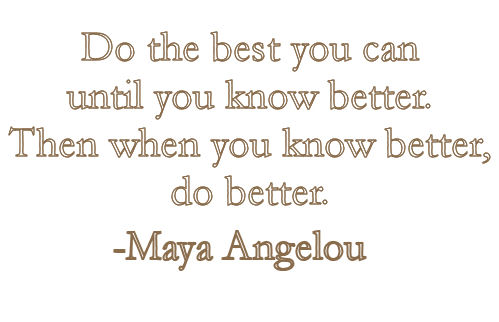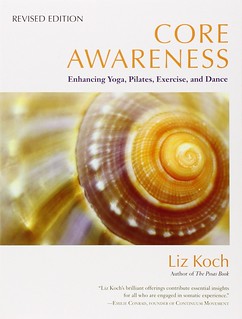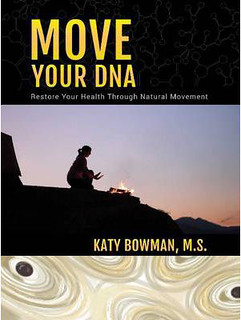
Years ago I thought the answer to the question How are we supposed to eat for longevity and optimal health? meant following a vegetarian diet. Obviously there are many varying views and opinions about this subject, but as my understanding of nutrition deepened, I started to believe that high quality animal products played an important role in the human diet. Chicken patties and fish sticks? No. Pasture raised animals and wild caught seafood? Yes.
After reading Deep Nutrition at the end of last year, I decided that a more traditional, ancestral diet was the dietary approach I needed to take. A “traditional diet” is usually described as lots of fresh fruits and vegetables, meat, organ meats and fermented and sprouted foods. I had taken a more Primal approach to eating and living a couple years ago (while still a vegetarian) but once I began to eat meat again, I was curious to know the difference between Primal, Paleo and the dietary guidelines of the Weston A. Price Foundation, which is basically what Dr. Shanahan prescribes in Deep Nutrition.
I picked up The Paleo Solution to see what all the fuss was over Paleo. I honestly had no intention of changing anything, but Robb Wolf does an excellent job of persuading you to give Paleo a try for 30 days. Give it one month to see if eating this way can make difference for you? OK, I’ll try it.
The Paleo Solution came along at the same I was trying to get to the bottom of my sugar and carb cravings, and I wondered if the Paleo approach to eating and exercise might help. The biggest changes for me were going to be cutting waaaay back on my cardio and the complete elimination of grains and beans. As far as bread went, I was eating mostly sprouted grain bread, but there was also the occasional slice of pizza, bagel or cookie thrown into the mix too. This also coincided with the end of Zak’s 40 day juice fast, and I thought if he could go without solid food for 40 days, I could certainly give up grains and beans for 30 days to see what happened.
The Paleo diet generally means that you eat meat, seafood, eggs and vegetables, as well as some fruit, nuts and seeds. You avoid grains, most dairy and legumes (beans, lentils, peanuts). No vegetable oils, no high-fructose-anything and for best results, sugar should be avoided too.
Things went so well that I ended up going way more than 30 days, but I’m not going to label myself “Paleo”. Over these last couple months I’ve read a number of other Paleo books, too many internet articles and have listened to a bunch of Paleo podcasts. I now feel like I have a much better understanding of what the Paleo diet is and like many aspects of the Paleo lifestyle. I never went “fully Paleo” because I was still eating some dairy, but for the last 2+ months here I have largely avoided grains and beans. Since early June, the majority of my diet has been comprised of meat, vegetables, some fruit, seeds and nuts with cream in my coffee, yogurt, butter and a very small amount of cheese. (Maybe ice cream once or twice too!)
These are my cliff notes to what I learned during my personal Paleo experiment, for anyone who’s ever been curious about or considered the Paleo diet. I want to share a little about my experience, as well as how I plan to incorporate some of the Paleo principles moving forward and which ones I’ll be leaving behind.
1. Paleo is not just a Diet, it’s a Lifestyle
Oh-so-cliche, but it’s true. Paleo is not just about the way you eat, but also includes your approach to exercise, sleep, stress management and overall health and wellness.
In terms of fitness, there is a lot of emphasis on building strength with heavy lifting. There is some sprinting/HIIT and lots of low intensity day-to-day movement too. Many people end up trying Paleo after they’ve found CrossFit, and lots of Paleo enthusiasts make their way to CrossFit eventually too. (Neither of these apply to me, for the record.)
2. Many people find Paleo when they are looking to solve a health issue.
I thought most people came to Paleo with aesthetic goals in mind, but now I understand that lots of people turn to Paleo because they are suffering from some health condition. Chronic pain, arthritis, heart disease, digestive trouble, thyroid issues, migraines or allergies. Others are hoping to ease the symptoms or slow the progression of an auto-immune disease like Multiple Sclerosis, Celiacs, Hashimoto’s, Raynaud’s Phenomenon, Fibromyalgia, Ulcerative Colitis, to name just a handful. And then there’s the crowd who are looking to improve the way they eat to feel better in general, for muscle gain or weight loss. There are A LOT of success stories out there, I have no doubt that this way of eating can make serious improvements to your health if you’re willing and committed.
3. Not everyone needs to completely eliminate grains or gluten.
If you’re curious about Paleo but can’t imagine giving up bread forever, you might not have to. Die-hard Paleo folk are pretty adamant that grains don’t belong in our diet, but based on my own experience and (Internet) research, not everyone is gluten intolerant. Much like animal products, the quality and processing of your grains is important, and I do notice a difference when I eat less grain compared to when I eat more, but I feel fine eating some gluten and wheat. For a while I thought I was going to eliminate grains completely, but after more thought, reading and experimentation, I’ve changed my mind and plan to keep some grain in my diet moving forward.
4. Reducing the amount of grains you eat can make a noticeable difference in the way you feel.
In the early months after Kaz was born (the summer of 2012) we were eating a lot of processed grain. More sugar than usual too. Not the worst of the worst, and there was still plenty of fresh produce to go around, but there was definitely an increase in snack foods like pretzels and granola bars, we were eating more bagels, homemade breads, muffins and cookies and devoured everything and anything that was brought to us from our generous family and friends in weeks following the arrival of our newest little family member.
During that time, Zak and I both had an increased amount of joint pain, mostly when first getting out of bed in the morning. It was really bad for a while, I felt like an old woman as I hobbled around the bedroom for the first few minutes after waking. My ankles and feet were very stiff and painful. I would also find myself with a very sore shoulder if I slept on my side. I suffered a migraine headache one day shortly after Kaz was born too (with the aura and nausea and everything) something that I had only experienced two other times in my life – mid 2007, right before I cleaned up diet, lost 35 pounds and started to educate myself about nutrition.
The joint pain would subside for both of us once we were up and moving around, but there was no doubt that this was different and new. Still, I didn’t give it a lot of thought. I chalked it up to postpartum hormones and recovery, but the fact that Zak was having similar symptoms was a little odd. When I mentioned it to my midwife at my 6 week postpartum check up, she said she’d never heard anyone complain of joint pain specifically related to recovery from pregnancy and child birth without corresponding joint pain during or before pregnancy. At that point I figured these issues would probably resolve once we got back to eating better again.
My Paleo reading and research has confirmed my suspicion: all the grains, sugar and processed carbs were we eating were very likely the cause our joint pain. Looking back, I remember now that our pain eventually vanished completely around the same time I was getting back into the kitchen and were eating less grains again.
These past couple months without grain products has been fine, but honestly it has been nothing earth shattering. I’ve realized that I don’t feel any better or worse than I do when I simply limit my grain consumption. I’ve reintroduced grains and know for sure that limited grain consumption is how I plan to roll.
This is all to say that you too might find that some bread consumption is OK, so don’t let the thought of “NO BREAD EVER AGAIN!” scare you off from investigating Paleo if you’re curious. I highly encourage you to be your own guinea pig, to do your own research and see what a change in your grain intake might do for you.
5. Doing less cardio is here to stay.
I’m not sure I can accurately express how much better I feel having cut back on my cardio. I’m not as hungry, I have more energy in the evenings, I’ve got more time to do other things I like to do and more time for house work too (oh joy!) – but I must admit, sometimes I think a clean house gives me the same endorphin rush I get after a long run. I certainly feel less stressed when I’m caught up on the housework.
Less cardio basically means less running, and I’ll admit that it took me a while to loosen my grip and let the running go. Running has been a part of my identity for a long time. I do still like to get out there once a week or so and play around with jogging/running/sprinting/walking for 3 mile stretches, but for now, I’m done with the regular 4 – 6 mile runs a few days a week I use to do. I don’t want to stop running completely, one of the reasons I love it is because I enjoy being outside. It’s also a relatively cheap form of fitness! But I can get all that with walking too, and sometimes I bust out into a short jog just for the fun of it, but for the most part, I’ve scaled way back on the running and have replaced running with walking most days of the week.
Doing less cardio has also given me more time for my yoga practice, something I’m really coming to value and appreciate more. I’m still riding my bike while it’s warm, especially because I know my heart rate easily stays in the fat burning zone while cruising around the city streets and bike trails, and I still have the option to spike my heart rate for short bursts of time by climbing some hills or with some intervals if the mood strikes.
6. You can tweak your approach to Paleo based on your own health goals.
Paleo usually means “low carb”, but I’ve come to see that if I go too low with my carbohydrate intake, I struggle with limbic hunger – or in other words, feeling hungry even though my stomach isn’t growling. Maybe it’s because I’m pretty active in my day to day life, maybe it’s because I’m still breastfeeding, but whatever the case – I know that going very low carb is not for me at this point in my life. I’m getting carbs from sprouted grains, fruit and root vegetables like sweet potatoes, parsnips, beets, carrots, etc. (Probably still way lower in carbs than the Standard American Diet though!)
If you work at a desk job, you might do well with fewer carbs and notice that it can help speed weight loss efforts and/or save you from that mid-afternoon/post-lunch energy crash. If you’re an athlete, you might need way more carbohydrates to get you through your workouts. If you like to run, then run! If you don’t want to do heavy lifting and would rather do yoga or body weight exercise (that’s me!), then do that. Paleo is definitely not a perfect, one-size-fits-all solution – it’s a guide that you can use to help you find your way based on your own needs and lifestyle.
7. I found some great new podcasts.
The Everyday Paleo Lifestyle and Fitness Podcast (with Sarah Fragoso and Jason Seib) and the Balanced Bites Podcast (with Liz Wolfe and Diane Sanfilippo) are two podcasts I’m not sure I would have tried without “Going Paleo” for a while. I’ve learned so much from both of these podcasts, each are usually the hosts answering reader/listener questions, but are sometimes interviews of authors or bloggers within the Paleo community. Both podcasts have been very helpful with lots of valuable info. I’ve been digging through the archives and listening to old podcasts along with the most recent ones, I highly recommend them if you’re a podcast person.
8. Eat Real Food. Period.
There is definitely a common theme among all the different ways one might choose to eat; Vegetarian, Vegan, Raw Food, Primal, Paleo, Grapefruit and Cabbage Soup Diet:
Eat loads of fresh food. Cut out the processed junk.
That’s it. Maybe you have to avoid gluten, dairy or nuts due to food sensitivities. Maybe you prefer to avoid animal products for ethical reasons. Do what you gotta do. But there are a few things I think everyone can agree on: Avoid processed foods. Don’t eat trans fats. Do your best to steer clear of pesticides and chemicals. Be mindful of your sugar intake. If you are just getting started on your own journey to better health, this is a great first step!
9. Paleo makes Intermittent Fasting easier.
Paleo does a good job of keeping your blood sugar in check because it’s hard to overdose on carbs without a lot of grain. When a large percentage of your daily calorie intake comes from protein and fat, you will likely become fat adapted and can more readily access stored body fat for fuel, as opposed to glycogen. I’ve written a little about my experience with fat adaptation before, but once you’re fat adapted, Intermittent Fasting gets a heck of a lot easier.
In The Paleo Coach, Jason Seib says that IF is a “late game” change to make, and I do agree. If your diet needs to be seriously overhauled and cleaned up or if you’ve tried IF and found it too hard – start with eating clean, reduce your carb intake and focus on getting more fat and protein into your diet. Once you’ve got your diet “dialed” (as Jason says) then try IF again.
10. The term “Paleo” is a great way to search for meal ideas.
Even though we’re eating some grains again, I still like to prepare meals that are grain and gluten free. You don’t have to call yourself “Paleo” to eat fewer grains or make meals without bread products, but Paleo cookbooks and websites are my latest resource for recipes and food ideas. That one little adjective makes it very easy to filter out recipes with ingredients I often prefer to avoid.
11. We are all different.
Well, maybe I didn’t just glean this small nugget of wisdom from my Paleo experiment – but I do want to point out the obvious here: what works for me may or may not work for you. My hope is that some of what I’ve shared here could give you a place to get started if Paleo is something you might want to try or you think there are some aspects of this lifestyle that might work for you. If you don’t feel healthy most of the time and know that your eating habits could use some improvement, the Paleo approach to eating and living could be just what you’re looking for.
Further Reading:
Balanced Bites: What is Paleo FAQ




Incredible! This blog looks just like my old one!
It’s on a entirely different topic but it has pretty much the same layout and design. Superb choice of colors!
Thanks for writing about your experience. It was interesting to read your take on the Paleo diet. Oh, and I love the quote you used at the start.
#8. YES! This is really interesting to me. Have you noticed a huge increase in your grocery bill? Just wondering…that’s always been my first thought when I hear about the Paleo diet. Cut out the cheap beans and grains and add in more meat and produce. Expensive! I’m glad you’ve found something that is working for you.
Yes, our grocery bill has probably gone up a little, but lately it feels about the same – mostly because it’s summer and I’m shopping at the farmer’s markets, plus we have our CSA pick up too that was paid for at the beginning of the year. It has meant a shift in spending priorities but we’re making it work!
excellent post. (is the diff in joint pain all you noticed when going off of legumes? you guys used to eat a lot.) i shared this with one of my other groups! i def need to track my joint pain and what i eat, since i cant pop a motrin anymore when i am hurting. some days its really bad. when i worked in the HFS i learned there is no one perfect diet except the one that works for you; you can do it most days, you feel good on it and your body thrives. but everyone can benefit from eliminating processed food, esp carbs.
My husband and I did the 30 day Paleo Challenge just over two years ago. I too was hesitant and then, at the end of 30 days, we were both hooked! I love this statement… Eat Real Food. Period. YEP!